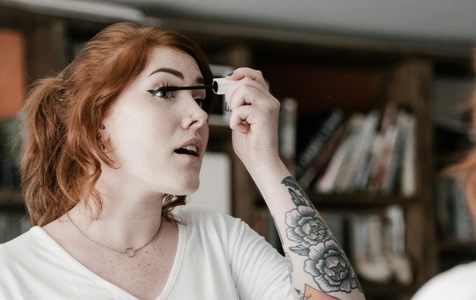What makeup labels actually mean?

The beauty industry is a dazzling maze of shiny launches, eye-catching packaging, and promises of transformative results. But for those of us with acne-prone skin, it can feel less like a wonderland and more like a minefield. Will that trending foundation clog your pores? Could that lip gloss trigger a breakout? The secret to navigating this maze lies in understanding product labels and identifying the right ingredients to embrace—and avoid. Let’s break it all down.
What Does ‘Comedogenic’ Mean?
The term "comedogenic" comes from comedo, the scientific term for blackheads and whiteheads. Products labeled as comedogenic contain ingredients that can clog pores, leading to blemishes. So, the first step in building a makeup routine that’s safe for acne-prone skin is learning how to spot these pore-clogging culprits.
Comedogenic Ingredients to Avoid
Here’s a list of common comedogenic ingredients that could be sabotaging your skincare game:
The Worst Offenders:
-
Myristyl Myristate
A synthetic oil often found in cosmetics for its conditioning properties. Unfortunately, it’s notorious for clogging pores and triggering breakouts. -
Laureth-4 (H4)
This surfactant can irritate the skin and block pores, setting the stage for acne. -
Isopropyl Iso-stearate & Isopropyl Myristate
These emollients make makeup feel silky smooth but can spell trouble for acne-prone skin. -
Oleth-3
A synthetic emulsifier that’s comedogenic and can exacerbate acne issues.
Less Comedogenic but Still Risky:
- Soybean Oil
- Stearic Acid: TEA
- Myristic Acid
- Glyceryl Stearate SE
- Lauric Acid
- Isopropyl Palmitate
- Cetearyl Alcohol + Ceteareth-20
- Cocoa Butter
While these ingredients are less likely to clog pores than the worst offenders, they’re still not ideal for sensitive or acne-prone skin.
Ingredients to Embrace for Acne-Prone Skin
Now that we know what to avoid let’s focus on the good guys—ingredients that can keep your skin happy and healthy.
Non-Comedogenic Products
Always look for makeup labeled non-comedogenic. These products are formulated specifically to avoid clogging pores, making them a must-have for acne-prone skin.
Mineral-Based Products
Mineral-based makeup, especially those containing zinc oxide or titanium dioxide, is less likely to irritate the skin or cause breakouts. These ingredients offer a gentle, skin-friendly alternative to traditional makeup. Try a mineral-based powder for a lighter, acne-safe finish.
Hypoallergenic Products
Hypoallergenic makeup is designed to minimize the risk of allergic reactions, making it safer for sensitive skin. Just remember, hypoallergenic doesn’t necessarily mean non-comedogenic—always check the label!
FAQs About Makeup and Acne
Q: What does ‘non-comedogenic’ mean?
Non-comedogenic products are formulated to avoid clogging pores, reducing the risk of acne breakouts.
Q: Are all mineral-based makeup products non-comedogenic?
Not necessarily. While zinc oxide and titanium dioxide are less likely to clog pores, some mineral-based products may contain bismuth oxychloride, which can irritate sensitive skin.
Q: Can hypoallergenic products still cause breakouts?
Yes. Hypoallergenic products are less likely to cause an allergic reaction but may still contain comedogenic ingredients that clog pores.
Conclusion: Smarter Choices for Clearer Skin
Navigating the beauty aisle doesn’t have to feel like a guessing game. By understanding ingredient labels, you can make informed choices that protect your skin from unnecessary breakouts. When in doubt:
- Opt for non-comedogenic products.
- Consider mineral-based makeup with zinc oxide or titanium dioxide.
- Look for hypoallergenic options to minimize irritation.
And remember, it’s not about the brand name or the latest trend—it’s about what’s inside the product that truly matters. Want more acne-friendly product tips? Check out MDacne’s acne-safe skincare solutions to keep your routine simple, effective, and tailored to your needs
Shop:
MDacne's Oil-Free invisible sunscreen
Clinique Acne Solutions Liquid Makeup
Almay Clear Complexion Makeup, Matte Finish Liquid Foundation
Neutrogena SkinClearing Mineral Acne-Concealing Pressed Powder Compact
Vichy Normaderm PhytoAction Acne Control Daily Moisturizer
More info:
Best Oil-Free Moisturizer for Acne-prone Skin
Best cleansers for acne-prone skin
To find the right acne treatments for your unique skin, take the free skin assessment by clicking here.



